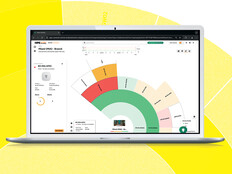DOD, Energy Department Use SDN to Create Smooth Connections Across Networks
When federal network operators need to expand their systems or add a device, they typically buy new equipment, set it up, log in, adjust each router and load a firewall, piece by piece.
But with networks handling ever-growing amounts of data and devices, that process has become too clunky, says Inder Monga, executive director of the Energy Sciences Network. ESnet connects and manages networks across the Energy Department’s 40 research sites, and also links to 140 commercial and research networks.
Agencies need IT infrastructure that doesn’t have to be ripped and replaced every seven to 10 years, Monga says. Today, they are increasingly turning to software-defined networking to improve flexibility in existing systems.
“It took 10 years to go from voice to Voice over IP,” Monga says. “We don’t have that time anymore. Things are changing more rapidly.”
SDN Gives Agencies More Flexibility to Change Networks
Software-defined networking, or SDN, permits a specific change or operational task (for example, the configuration of a router or database scheduling) to happen across every device in a system of individual networks without manual intervention, automating network management.
“Federal agencies need to deal with more and more networks that are connected,” says Matthew Palmer, founder and CEO of SDxCentral, a media firm that covers the IT infrastructure market. “With software-defined networking, you can change the policy on the fly across all those networks at once.”
SDN particularly benefits agencies that oversee large networks and data centers. The result is speed, efficiency and cost savings.
“Things can go from taking weeks and months to do, down to hours,” says Robert Kimball, technical adviser of the cyber development directorate at the Defense Information Systems Agency.
At DISA, SDN is layered into VPNs that handle the provisioning of requests from mission partners for IT service or support, he says. Once the request is approved and loaded into the system, SDN does the rest. The time to provision drops from weeks to less than a day.
DISA also has implemented SDN in its data centers, smoothing communication streaming between networks. “We’re basically saving hundreds of thousands of man hours,” Kimball says.
SDN is also useful for microsegmentation, Palmer says. For example, if two entities within a network operate with the same equipment, they could share a single firewall, rather than each needing their own.
Agencies that are incorporating SDN are moving slowly with those conversions. They’re building protections into the technology — which is like a self-driving car, with a network running itself — so it doesn’t veer off course. As Kimball puts it, “We are not letting the computers off the leash.”






_0.jpg)



